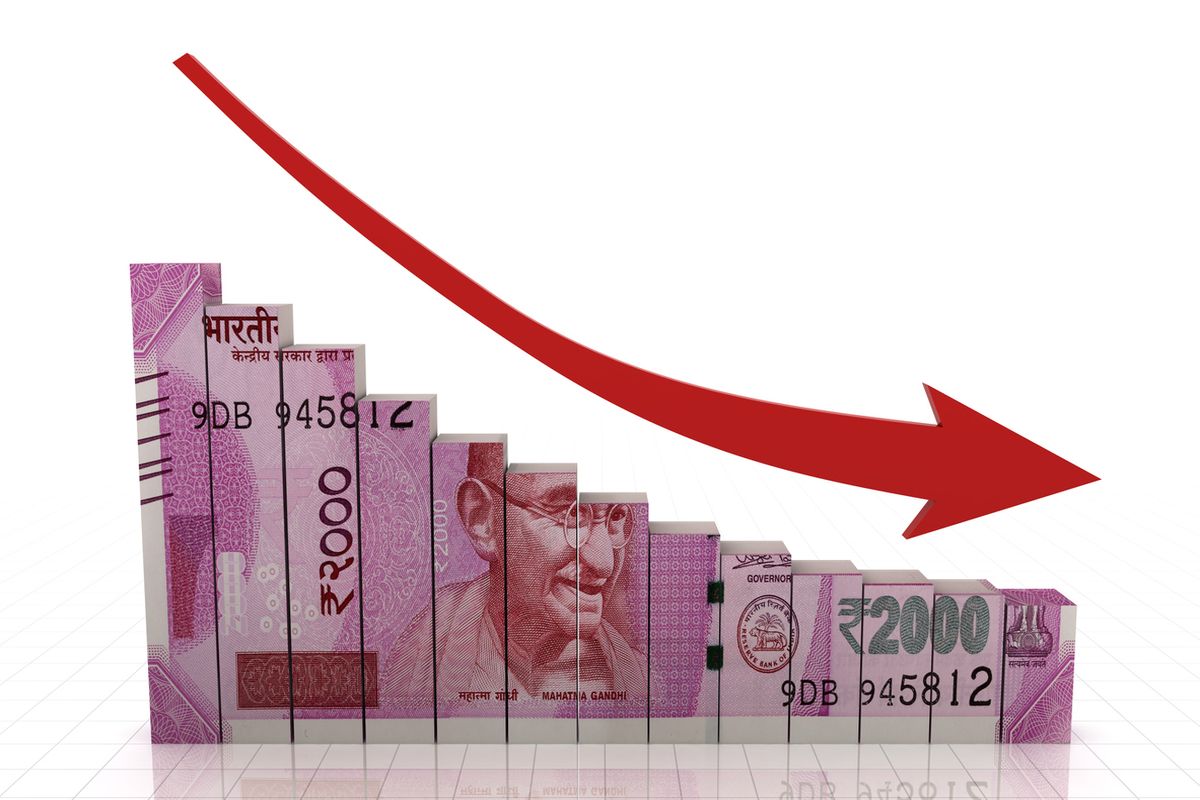The importance of Arun Jaitley as the finance minister is now understood when the economy reels under depression with GDP registering a low growth of 5 per cent in the first quarter of fiscal 2019-20, the least in the last six years, and crucial sectors like auto, real estate, hotels, core inputs and consumer goods like biscuits, etc. suffer a slow down due to loss of demand and hence curtail jobs. This is the initial problem, starting from the NBFC crisis, although opinions differ among economists on whether to call the crisis cyclical, sectoral or structural. Those who believe it is just a temporary slowdown call it a sectoral or, at best, a cyclical phenomenon pointing out demand-supply mismatch.
This almost echoes the government’s view. On the other hand, those who view it in a more serious way as the slowdown has been continuing over the last six quarters with growth rate having slumped from 8.1 per cent in March 2018 to 5 per cent in June this year, call it a structural malaise and urge reforms in areas like tax, both direct and indirect, land, labour and infrastructure to facilitate manufacturing and spur consumer demand. This latter group is thus against the government’s view of the problem and blames the uncalled-for demonetisation and the hasty implementation of GST as factors responsible for choking off demand from the vast unorganised sector and pushing the economy to virtual recession.
Advertisement
This criticism is not new but has gathered strength now as the economy gradually slows down to be only seventh largest in the world now, down from fifth, achieved last year, and even leaving the first place in terms of growth rate to China which is also receding. Mr. Jaitley, in his lifetime, repeatedly refuted the allegation saying those measures were long overdue for cleansing the economy of black money and making business and commerce transparent on principle of pursuing one economy-one market-one tax policy. However, considering all aspects of the present scenario, the government called it a protracted slowdown and undertook measures to rejuvenate the economy so that it marches towards achieving $5 trillion GDP by 2025 to be the third highest in the world behind only USA and China.
Mrs. Nirmala Sitharaman, initially looking shaky but now fully confident, is trying her best to tackle the crisis of the economy but the problem is that its nature is still not certain, particularly in respect of sectoral performances, as all national and international forecasts have been proved wrong with the growth rate plummeting. Also, there is the experts’ warning that this ongoing slowdown, if not properly tackled, may turn into a fullfledged recession by the end of 2020. What is certain is the fall in demand in the face of high unemployment buttressed by agricultural distress. Considering the present slump as a cyclical one, the FM has initiated traditional measures of demand recovery through augmenting investment, both public and private, to boost manufacturing activities to spur employment and demand, following the simple Keynesian way.
For this, she took away RBI reserves of Rs. 1.76 lakh crore, despite facing criticism, to pump into badly affected sectors including real estate to finish off ongoing projects, facilitated lending activity of banks with recapitalisation facility of Rs. 70,000 crore followed by reducing their numbers through mergers to reap scale benefits with pooled up credit and lowered capital gains tax from 30 to 25 per cent. Besides, infrastructure investment of Rs. 1 lakh crore in addition to a water project of Rs. 3.5 lakh crore has been announced with a completion target of five years, besides ongoing 486 projects worth Rs. 14 lakh crore.
Although it was expected that these measures would boost demand in the economy, the FM did not take a chance and further announced a flurry of measures to reform corporate tax and the GST to attract and get back global and Indian investment. A major reduction of about 10 per cent in corporate tax for both existing and new firms to make it 25 and 15 per cent respectively is a welcome move as it now makes India globally competitive. The ongoing demand crunch blamed for the economy’s slowdown, has many causes – fall in banks’ credit, high GST rates, agricultural distress and, as a combined effect, fall in employment. Banks’ credit shortage is addressed by mergers on the one hand and recapitalisation on the other so that more money is infused for lending with successive rate cuts and scale benefits.
But more serious is the allegation that GST curbed demand. Apart from being complex in nature, high GST rates are often cited by many as causing dampening effects on consumption demand, particularly in auto, hotel and realty sectors. In the latest GST council meeting in Goa, 37th since inception, many of these were exempted from the highest tax rate of 28 per cent to be mostly subjected to 12 and 18 per cent, even making low-priced hotel rooms tax free. In fact, the number of goods subjected to the highest rate of 28 per cent has been continuously reduced since introduction to only 36 accounting for 2 per cent of total goods taxed and thus giving relief to consumers.
Now a majority 57 per cent goods bear rates up to 12 per cent with MSME sectors, one major job providing area, getting adequate tax relief to grow. Agriculture is another area of concern as farm distress has caused job and demand fall. The problem here is lack of a mechanism to ensure farmers getting MSP for different crops. This is a serious issue as the public procurement policy loses importance in a free market economy compelling majority of farmers to suffer losses at low prices at private hands. In order to fructify PM’s dream to double farmers’ income by 2022, a new method called PDP (pay the difference of price), has been introduced by the Centre in case of kharif crops last season which is likely to be extended to other crops.
These are, no doubt, good measures to recover demand. Different rating agencies, national and international, are optimistic now about the Indian economy with investment being encouraged by a competitive corporate tax rate. But scepticism still lies whether these measures are sufficient to raise demand as there is scope for more reform in tax policies. First, capital gains tax could be withdrawn or lowered to 5 or 10 per cent to make it comparable with other Asian nations. Capital gains tax is treated by business as illegitimate penalty on its initiatives and hard labour killing entrepreneurship.
If capital gains after profit calculation is reinvested in business, there is hardly any justification to tax it. In fact, withdrawing capital gains tax will be more effective for inviting investment, both domestic and foreign, than reducing corporate tax as it is a profit tax which big firms generally try to avoid to enlarge capital gains for reinvestment purpose taking help of tax concessions. For this reason, our capital gains tax, being quite high, is small in amount and detrimental to business. So is the case with personal income tax. It is not known why the interim tax rate of 10 per cent in between 5 per cent and 20 per cent was withdrawn in last year’s budget and the latter rate imposed on the Rs. 5 lakh-Rs. 10 lakh slab creating enormous difficulties for medium income earners.
When both savings and consumption are necessary for the economy to maintain a rhythm, the FM must see that the middle class, being the largest section of both population and tax-payers, can have both at ease. Costs of housing, school education and health needs, particularly in towns and cities, are also to be kept in consideration while fixing the structure. Now the middle class is scared to consume beyond necessities with little or almost no surplus income available post tax.
(The writer is an Associate Professor of Economics who retired from WBES)











